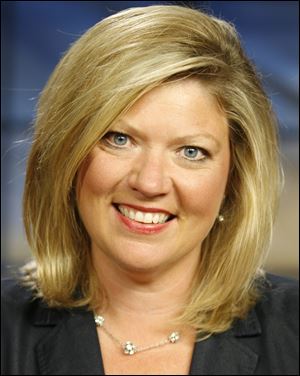
IN THE GARDEN
Give your garden the royal touch
7/16/2014
Kelly Heidbreder
Are you the king or queen of your own castle? I’d like to think I am the queen of my castle, but I usually just end up as Cinderella. With a little help from my fairy godmother, I had a chance to walk through a true king’s garden on a recent trip to Europe with my daughter, Hannah. I brought home many royal ideas.
King Louis XIV
We spent a few days walking miles and miles around Paris. Yes, we made it to the top of the Eiffel Tower, ate gelato outside Notre Dame, and took a boat ride down the Seine. All of it was amazing, especially when I got to the Palace of Versailles.
We toured the palace, but it was the garden that captured me. According to our guide, this Royal Garden spans almost 2,000 acres of Versailles, France. It has more than 200 trees, 50 fountains, and a Grand Canal that snakes through about 60 of those acres. Can you imagine planting 100,000 annuals every spring? Double that and that is what the royal grounds crew plants every year.
King Louis XIV had the garden built in the 1660s and it has been renovated over the years in many different degrees. But the basic traditional, formal French style has remained.
Formal French
What is formal French style? Manicured hedges, sculpted boxwood, and yews. Straight lines, sharp edges. The Garden of Versailles is designed with a series of pathways throughout the garden. Some wide, some narrow. Some long, some short. The pathways create geometric shapes filled with hedges, sculpture, perennials, and thousands of annuals. Like the spokes on a wheel, larger paths converge to central fountains that essentially create outdoor rooms.
This opulent landscape draws millions of visitors every year, and is one of the most visited public sites in France. The long, winding grand canal was designed for boat parties. But here’s the really cool part: it was also useful. It was constructed in a low point in the garden and all the rainfall from the roof of the grotto and fountains drained to the canal from higher ground. According to our guide, the water was recirculated by pumps and those pumps were powered by windmills and horses. What is even more amazing is the basic mechanics of the underground structure still exists.
A royal idea
There were so many ideas that could be incorporated in our own landscape. One simple idea is to extend the flowerbeds inside the hedgerows. The pathways were lined with boxwood hedges. They have been tightly shaped to about three feet tall with square edges.
But the hedge didn’t stop in one single row. The hedge is actually the edging, so I call it “hedging.” The hedging outlines the geometric pathway. The open space created inside the outlined path is filled with soil and the hedging has created a raised flowerbed filled with annuals and perennials.
Keeping the flower choices simple and repetitive fits with the formal landscape design. The color choices are simple. They don’t just plant one red rose bush in the raised bed between the hedging. The entire garden bed is filled with the same simple flower or three-flower combination. Streamlining the plant combinations makes the design look elegant and royal — a garden that is fit for a king or a queen.
Contact Kelly Heidbreder at getgrowing@gmail.com